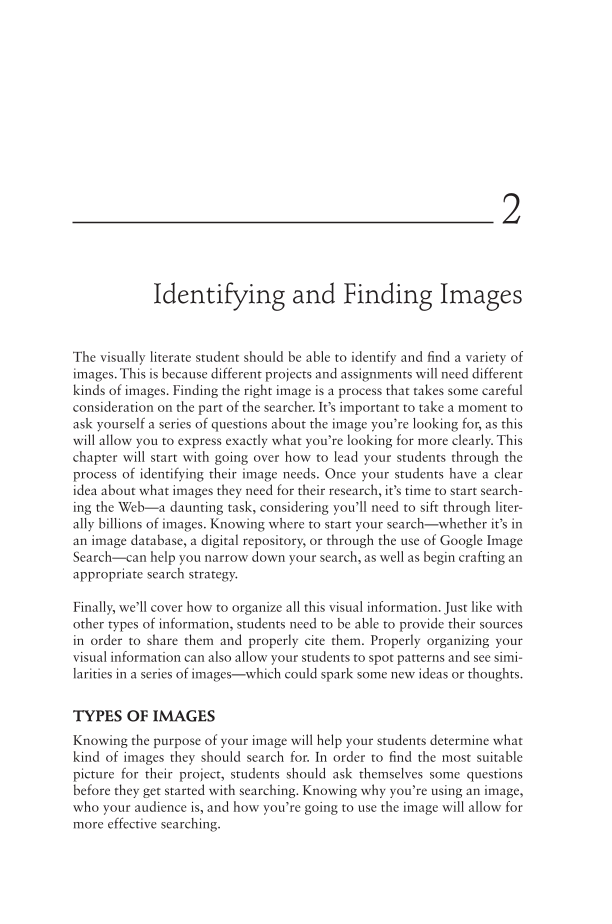2 Identifying and Finding Images The visually literate student should be able to identify and find a variety of images. This is because different projects and assignments will need different kinds of images. Finding the right image is a process that takes some careful consideration on the part of the searcher. It’s important to take a moment to ask yourself a series of questions about the image you’re looking for, as this will allow you to express exactly what you’re looking for more clearly. This chapter will start with going over how to lead your students through the process of identifying their image needs. Once your students have a clear idea about what images they need for their research, it’s time to start search- ing the Web—a daunting task, considering you’ll need to sift through liter- ally billions of images. Knowing where to start your search—whether it’s in an image database, a digital repository, or through the use of Google Image Search—can help you narrow down your search, as well as begin crafting an appropriate search strategy. Finally, we’ll cover how to organize all this visual information. Just like with other types of information, students need to be able to provide their sources in order to share them and properly cite them. Properly organizing your visual information can also allow your students to spot patterns and see simi- larities in a series of images—which could spark some new ideas or thoughts. TYPES OF IMAGES Knowing the purpose of your image will help your students determine what kind of images they should search for. In order to find the most suitable picture for their project, students should ask themselves some questions before they get started with searching. Knowing why you’re using an image, who your audience is, and how you’re going to use the image will allow for more effective searching.
Document Details My Account Print multiple pages
Print
You have printed 0 times in the last 24 hours.
Your print count will reset on at .
You may print 0 more time(s) before then.
You may print a maximum of 0 pages at a time.









































































































